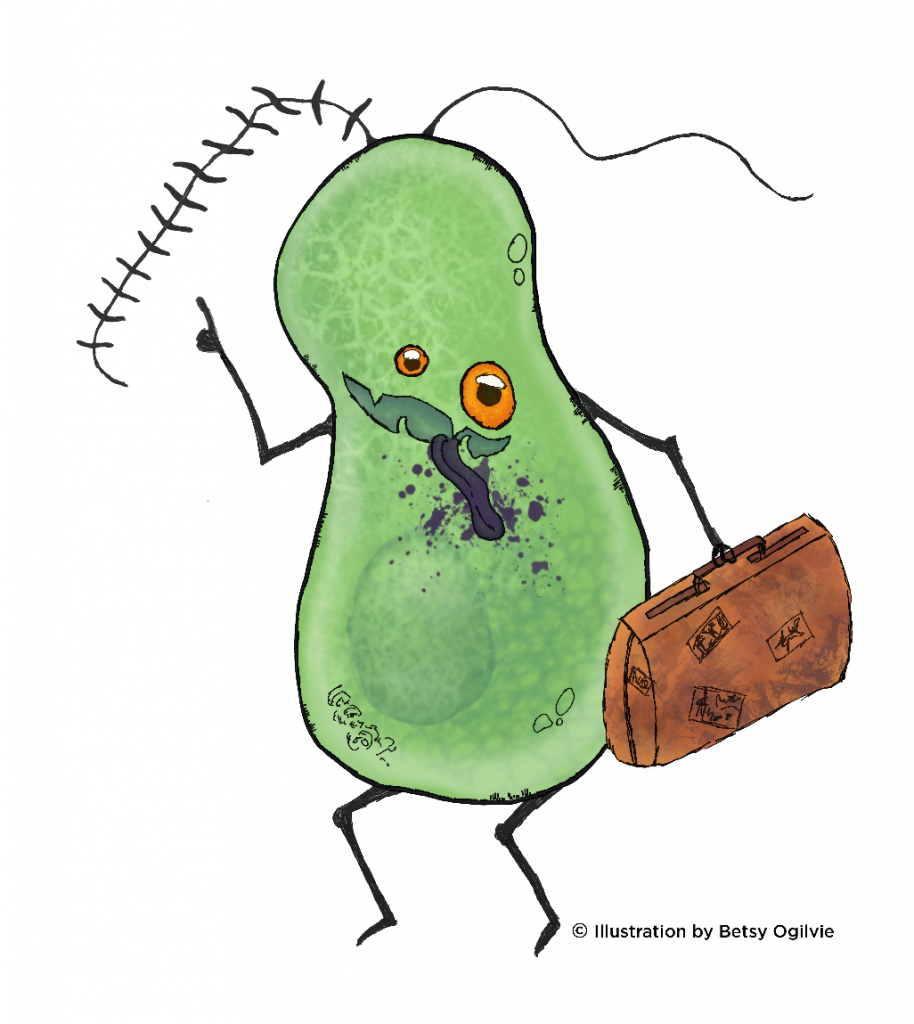Introducing Hatch, the newest member of the RBGE menagerie. Hatch can be found on the signs at the biosecurity footbaths at entrances to each of our gardens, and for the sharp-eyed, hiding in the No Hitchhikers! exhibit in the John Hope Gateway.
Hatch is the work of talented illustrator and Visitor Welcome team member Betsy Ogilvie, whose work you might recognise from our popular Halloween Trail. A quick glance at Hatch tells you what you need to know: this is a baddie! Critters like this can hitch a ride in mud and plants, on our shoes and in our possessions.
If you look closer, though, you might notice something funny about Hatch’s antennae—they’re not antennae at all. They’re actually flagella, the stringy, tail-like structures that some microbes use to swim through water, even small amounts like drops on a leaf, or water filling the space in soil. Hatch has one decorated ‘tinsel’ flagellum that’s used to steer, and one smooth ‘whiplash’ flagellum to push through water toward chemical signals that show a host is nearby. Betsy worked with a team of scientists to model Hatch after the swimming spores of an oomycete. These are a type of brown algae—more closely related to diatoms and plants than to fungi and animals—that are important pathogens of plants and fish, including the pathogens behind the great potato famine in Ireland and the more recent Sudden Oak Death and Sudden Larch Death. Hatch’s name is an homage to the early observations of swimming spores emerging from an egg-like structure that gave oomycetes their name (oo for egg, mycete for their fungus-like growth).
But if you look at Hatch and just see “bug”, that’s ok. Lots of other kinds of organisms can hitch rides and bring new diseases to new places, including insects, nematodes (eelworms), bacteria, fungi, and viruses.
Visit the No Hitchhikers! exhibit on display at the John Hope Gateway to find out more.
This project was funded by the Scottish Government SEFARI Responsive Opportunity Initiative.

